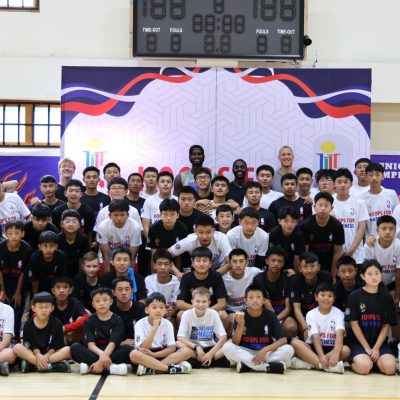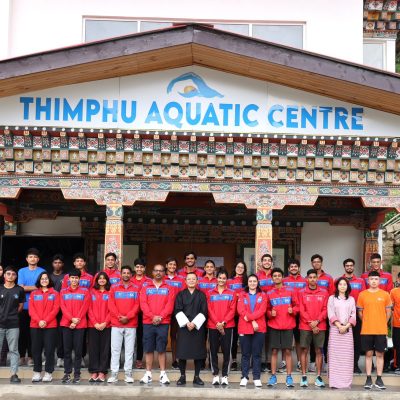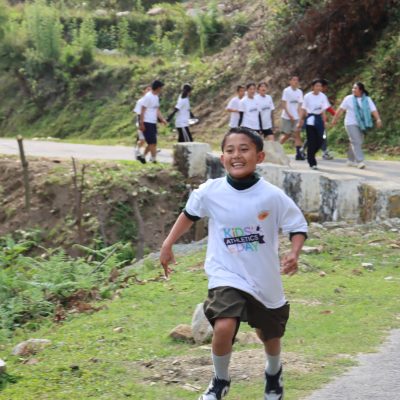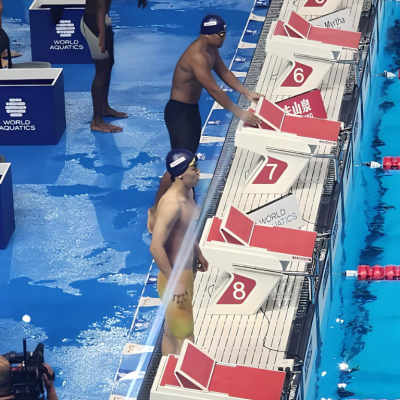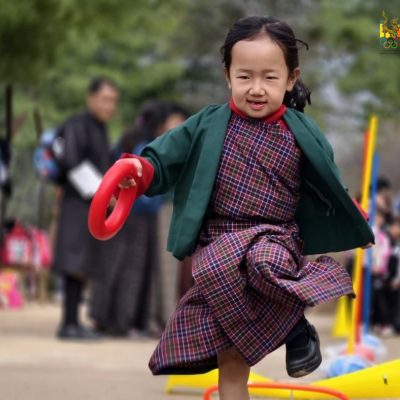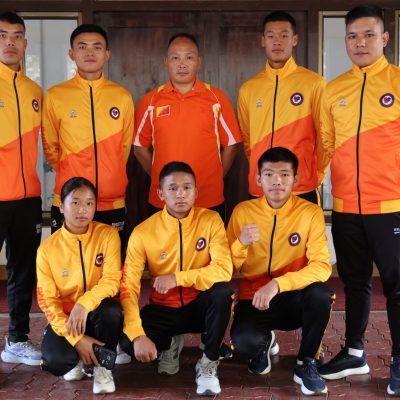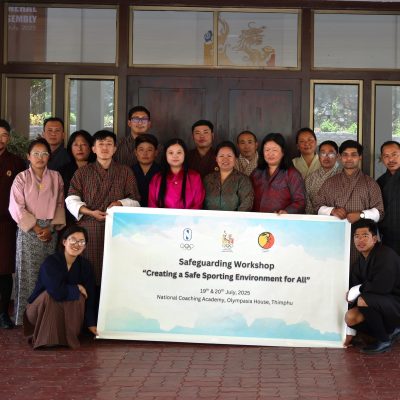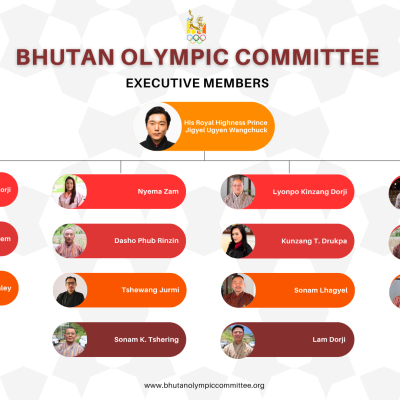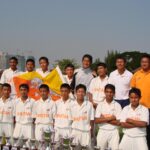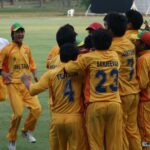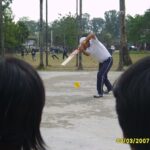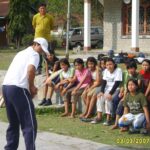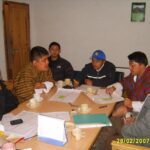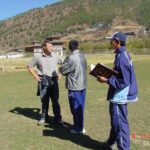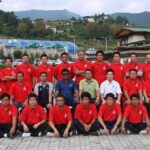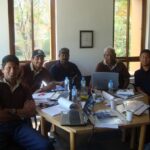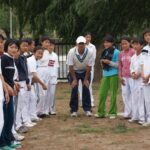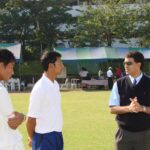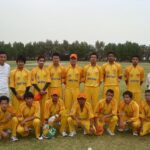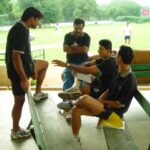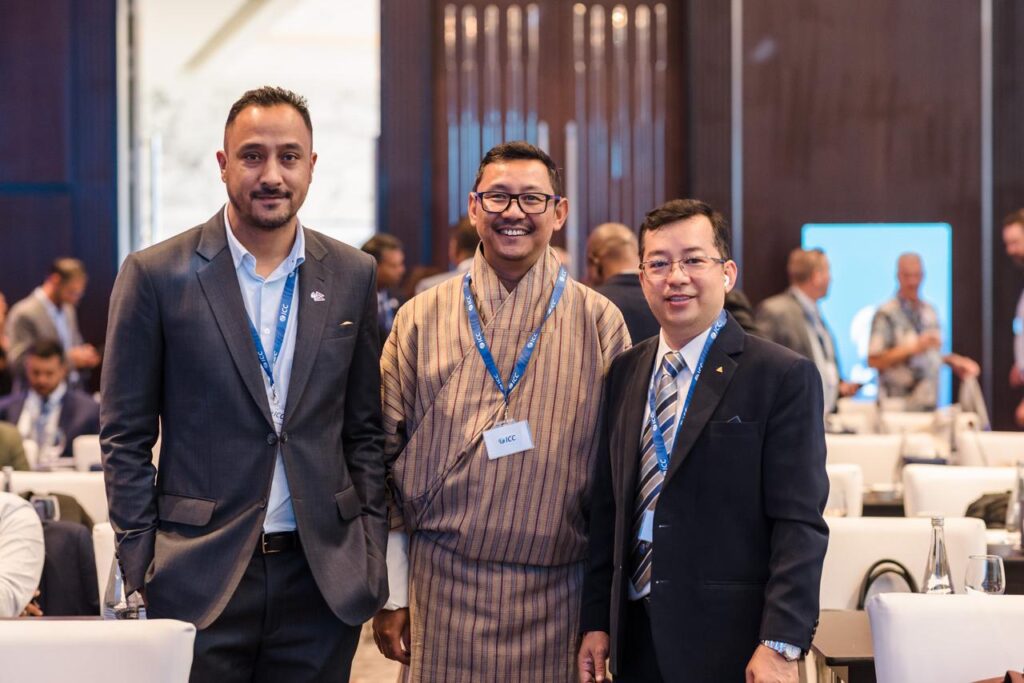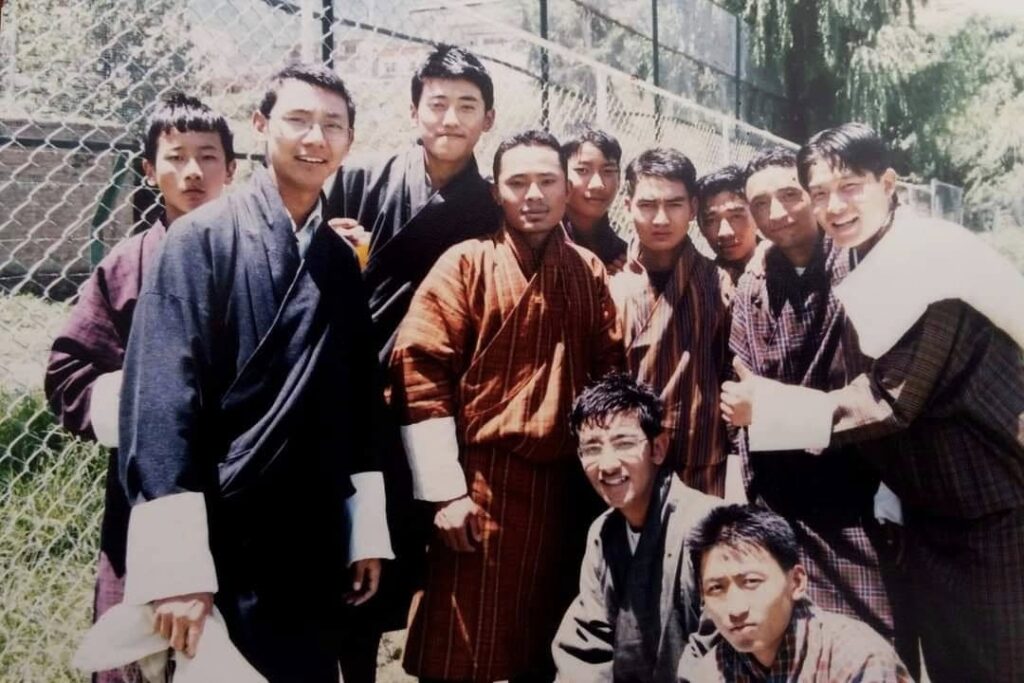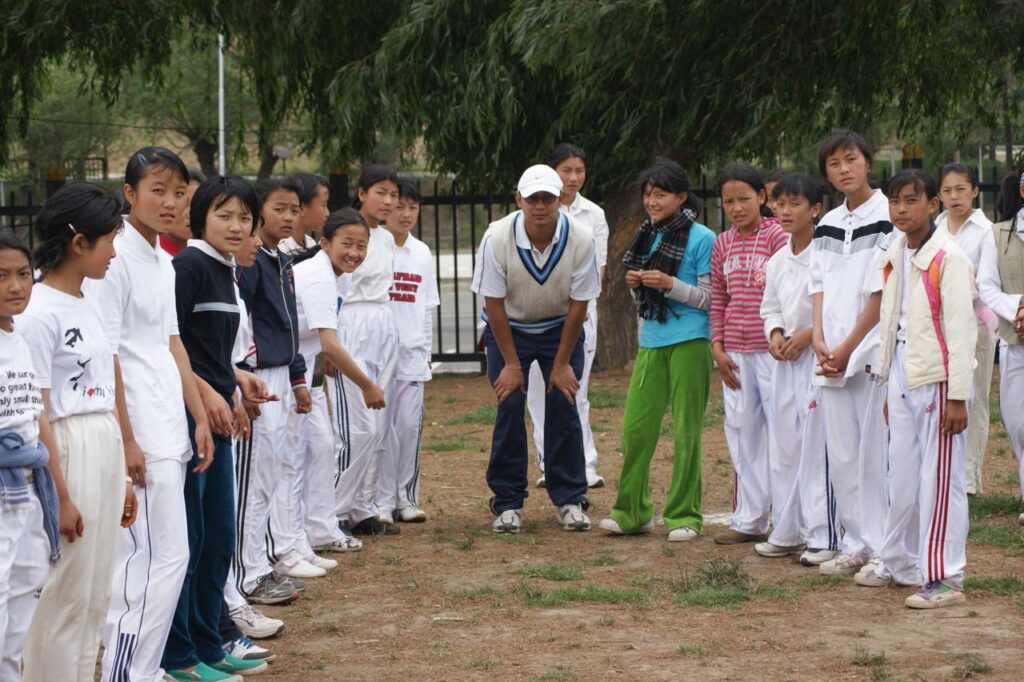Damber S Gurung
Leading Bhutan Cricket into a New Era
Damber S Gurung’s journey in cricket is a true story of dedication and growth. Starting out as a passionate player, he rose to become the captain of the Bhutan Cricket team, leading with pride and determination. His leadership didn’t stop there; as Head Coach, Damber focused on developing young talent and shaping the future of Bhutanese cricket. Today, as the CEO of Bhutan Cricket, he is leading the sport to new heights, driving the organization towards unprecedented success.
Under his leadership, one of the most significant milestones was the creation of Bhutan’s very first international cricket stadium in Gelephu, a groundbreaking achievement for the country’s cricket community. But the vision doesn’t end there. Plans are already underway to build a second international stadium in Thimphu, taking Bhutan’s cricket ambitions to an even bigger stage.
Having witnessed the transformation of Bhutan Cricket from a small club to a full-fledged federation, Damber continues to lead with a clear vision for the future.
This exclusive interview was conducted by Victor Gurung, Media & Technical Lead Consultant, BOC.
I sit down with Mr. Damber Singh Gurung, the CEO of Bhutan Cricket, to discuss his remarkable journey in the sport, the current state of cricket in Bhutan, and the future vision for the sport in the country.From his early days as the first national team captain to leading Bhutan Cricket into new international heights, Mr. Gurung shares his insights on the challenges, triumphs, and exciting developments unfolding in Bhutan’s cricketing world.
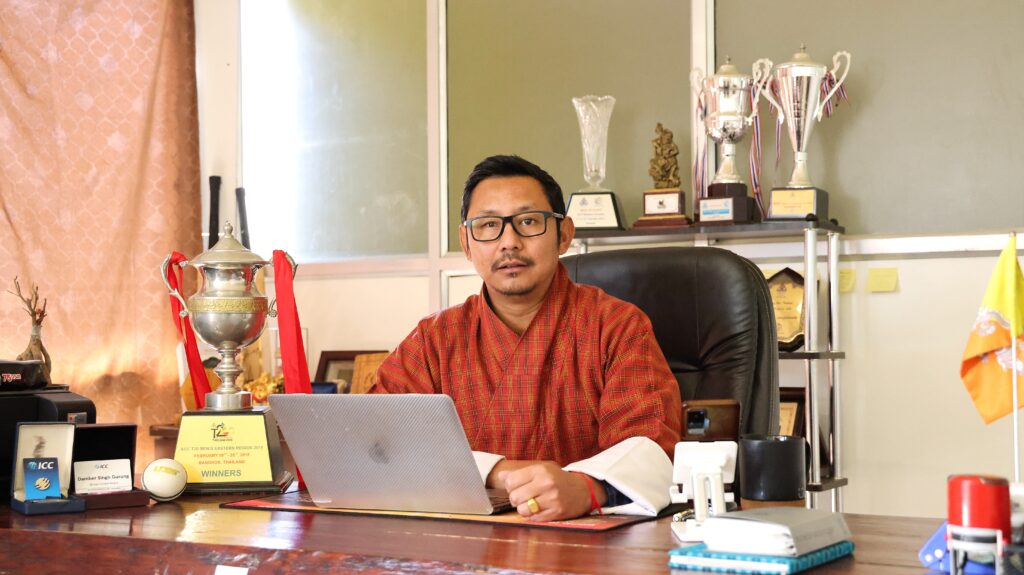
What led to your role as the CEO of the Cricket Federation?
I’ve had a long and fulfilling journey with cricket. I am proud to say that I was Bhutan Cricket’s first employee, the first national team captain, and also the first Bhutanese coach. Over the years, I’ve had the privilege of representing Bhutan in numerous international tournaments, both as a player and as a coach. It’s been a long road, filled with hard work and dedication from many people, all of whom have contributed to bringing cricket to the level it is today.
When the former CEO resigned in 2019, the position was offered to me. Initially, I was uncertain about taking on the role, but I soon realized there was a reason why the opportunity came my way. As a passionate cricketer and someone who deeply believes in the potential of Bhutan Cricket, I couldn’t turn down the chance to contribute further to the growth of the game. With a clear vision of where I want to see Bhutan Cricket in the future, I accepted the responsibility with a strong sense of commitment and love for the sport.
What has been your vision for the sport since you took on this role?
Having been part of the system for so long, I was the Head of the Coaching Department before taking on the CEO role. From the very beginning, my focus has always been on player development, as they are our greatest assets. Without players, there’s no need for an office, staff, coaches, or infrastructure.
When I proposed to the board, my primary focus was investing in players, coaches, and infrastructure, as these are the three pillars essential for growth. I recommended that we allocate whatever resources we had to these areas, with a vision for the next five years.
Players need excellent coaches, and both players and coaches require top-quality facilities to enhance and showcase their skills. Today, I’m proud to say that we have a growing pool of talented players, a strong coaching team, with some already at an elite level, and expanding infrastructure. The standard of cricket has improved significantly, and the sport has become one of the fastest-growing in Bhutan.
Another key area the board focused on was building a system that could run independently. Even if we were not here tomorrow, the system should be self-sustaining and continue to drive cricket forward.
The salary structure has also been a critical area of focus for us as a board. We recognized the need to improve it, and increasing salaries has been one of our top initiatives. As we continue to generate more resources, we will keep adjusting the salary structure based on performance. I believe this is one of the best ways to motivate our players and staff, as it directly rewards their contributions to the growth of Bhutan Cricket.
Looking back, I firmly believe that in the last five years, we’ve achieved most of what we set out to do. I’m especially proud that Bhutan Cricket has been recognized by ICC and ACC, winning development awards.
Today, Bhutan is ranked 14th globally in the ICC Development Rankings among 96 countries. These achievements would not have been possible without the dedication of our team.
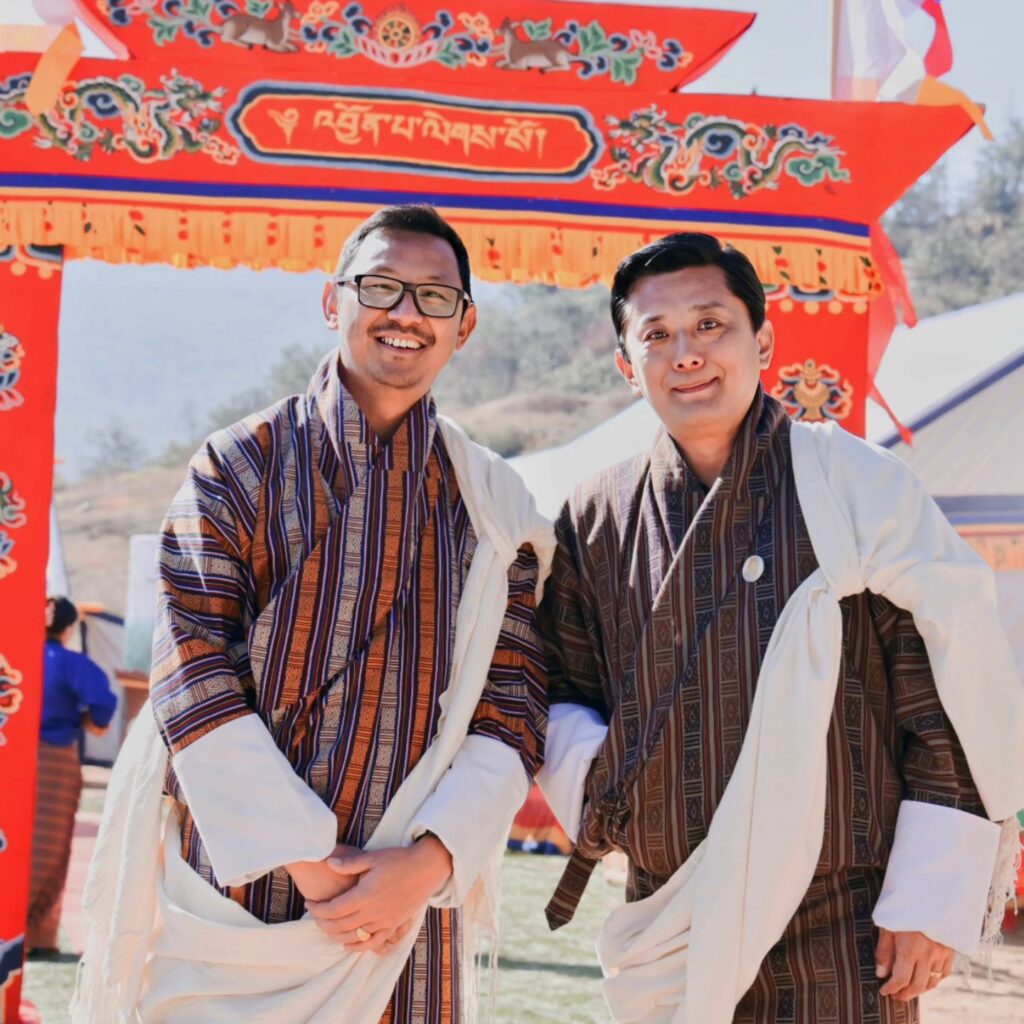
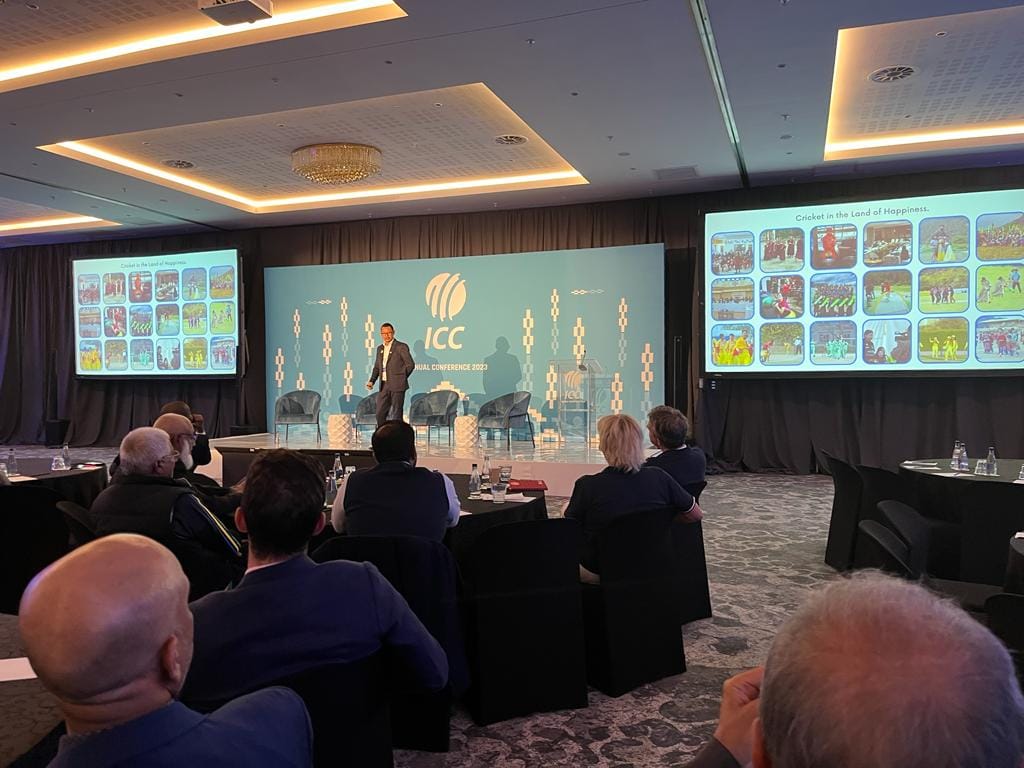
How is your board structured, and how has its effectiveness contributed to bringing Bhutan Cricket to its current level?
We have a seven-member board, including myself, led by the dynamic President, Dasho Thinley Wangchuk Dorji. We hold four board meetings annually, along with an Annual General Meeting (AGM). Our board operates with a clear mandate and vision, and the contributions from each member have been invaluable.
I would particularly like to express my gratitude to our President, who has been an unwavering source of guidance and support in my role. Not a single day goes by without discussions about Bhutan Cricket. One of the key reasons for our growth is the President’s relentless passion and proactivity in promoting the game. His leadership and dedication have become a driving force that inspires all of us to push for greater success.
We are fortunate to have a diverse mix of board members, including former cricketers, representatives from the Bhutan Olympic Committee (BOC), financial experts, and legal professionals. This diversity has been crucial in shaping the cricket system and structure in Bhutan, providing us with the necessary expertise to move forward with clarity and effectiveness.
In addition to the board, the Bhutan Olympic Committee has been incredibly supportive, consistently offering unwavering guidance and assistance. Their partnership has been instrumental in helping us grow the sport.
I believe in the power of teamwork, especially coming from a sports background. Our working culture revolves around collaboration, and this is evident at every level—from board members to office staff, coaches, and the ground team. Everyone understands our shared vision and demonstrates tremendous dedication in their roles. I’d also like to give a special shout-out to the people working on the ground, who have been putting in relentless hard work to ensure that our cricketing infrastructure and operations run smoothly.
Cricket in many countries starts with strong grassroots initiatives. What steps has the Cricket Federation taken to develop the sport from the grassroots level in the country?
Grassroots programs are crucial to the success of Bhutan Cricket. We’ve been running grassroots activities in schools for quite some time, starting with an Entry Level Program. For the past five years, in collaboration with the ICC, we’ve also been running the Criiio Program under the theme ANYWHERE, ANYTIME, ANYONE. This initiative has been actively implemented in schools with the goal of catching them young.
The aim is to introduce cricket to children at an early age, providing them with free equipment like bats, balls, and stumps so they can play the game anywhere. Last year alone, we reached nearly 35,000 kids through this program.
In addition to engaging young players, this initiative also provides an opportunity for our coaches to identify and nurture serious talent at a young age. Talented players are then brought into our academy to further develop their skills. As a result, we now have many cricketers who have progressed to represent the national team.
Latest Updates and Insights
Discover our newest blogs, news, and announcements—curated just for you. Stay informed and inspired!
What programs or initiatives are in place to engage youth and school-level cricket?
We have a year-round program for youth engagement, which includes school competitions, coaching camps, and club tournaments. Additionally, we’ve introduced Intra-School Competitions, where students have the opportunity to play with either tennis or proper cricket balls. This initiative is designed to give more kids a chance to play and enjoy the game. We’re also working on launching a Junior Club Tournament to further uplift the standard of junior cricket.
Since 2017, we’ve been partnering with UNICEF Bhutan and yearly we conduct a Youth Empowerment Program using cricket as a tool. This collaboration has been vital in reaching out to young people and using the sport as a tool for development.
Moreover, the Bhutan Olympic Committee in collaboration with the Ministry of Education, and the Ministry of Skill Development are set to launch a Sports School this year, where cricket will be a part of the curriculum. We are confident this initiative will not only improve standards across various sports but also help in the development of players, especially within the school system. As cricket, we are already working on our plan of action for this exciting development.
How do you ensure that cricket reaches not only urban areas but also rural regions where access to facilities may be limited?
Since last year, we have appointed four regional coaches, each overseeing the development in 20 districts. The main aim of this initiative is to ensure cricket reaches every district, and it has shown great progress so far. This year, we are looking forward to expanding our outreach to more schools and communities. In parallel, we are planning to develop facilities in these regions, phase by phase, to further support the growth of the sport.
How does the Cricket Federation support the development of home-grown talent to reach international standards?
Honestly, developing home-grown talent is a long-term process that requires a structured player development plan. We engage young players through grassroots programs like the Criiio Program and school competitions, providing free equipment to encourage participation. Talented players are identified early and invited to join our academy for specialized training. Coaching excellence is a priority, with our coaches receiving ongoing development to stay updated with the latest techniques. Supported by regional coaches, we cover 20 districts to ensure quality training across the country. We’re also expanding cricket infrastructure, developing new facilities to give players the resources they need.
Players gain valuable exposure through domestic tournaments and international opportunities, helping them build competitive experience.
Additionally, we maintain a clear high-performance pathway that guides promising players into the national team, offering advanced training and support. Bhutan Cricket is also working on streamlining the coaching system, with the aim to establish a robust coaching framework by the end of 2026. This comprehensive approach ensures our home-grown talent is well-prepared to compete internationally.
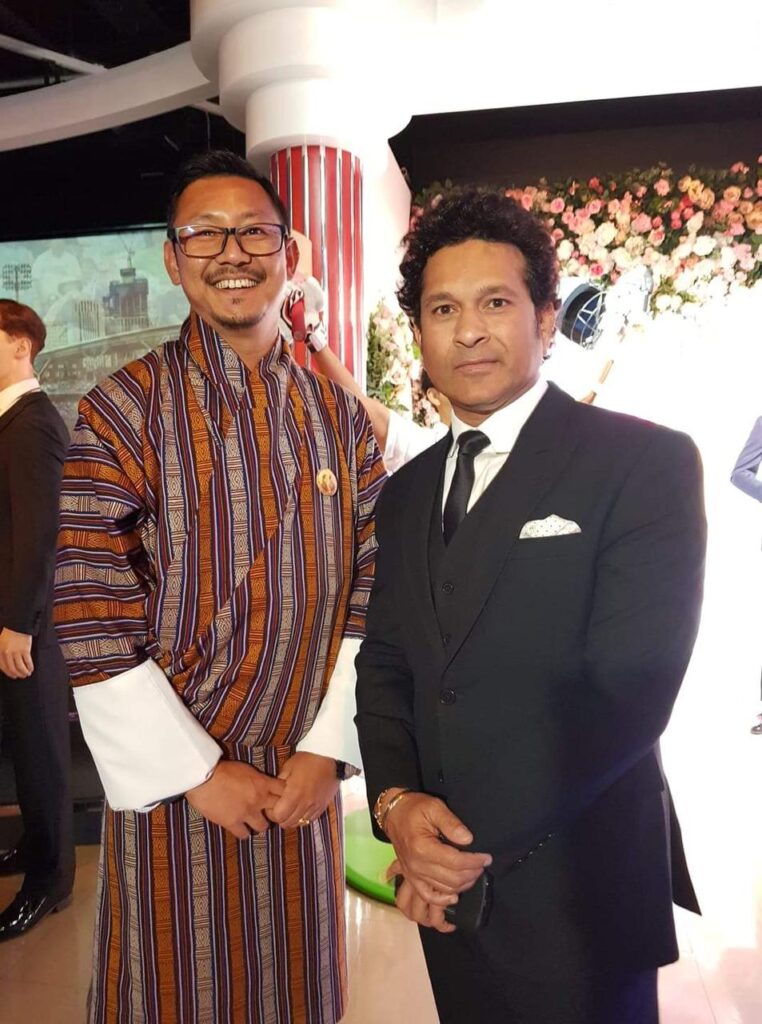
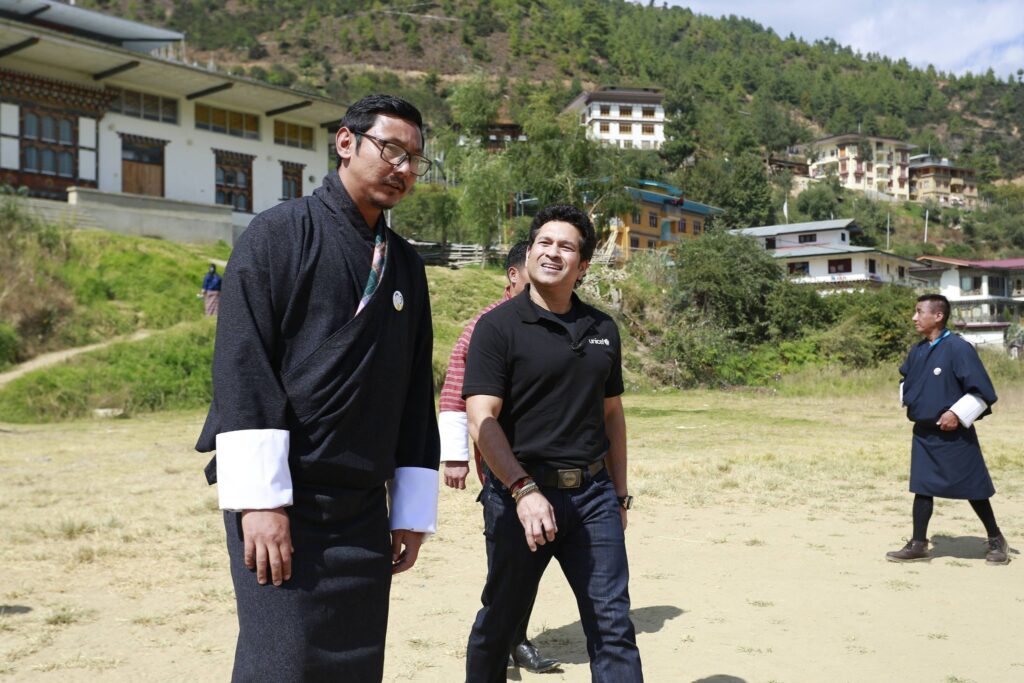
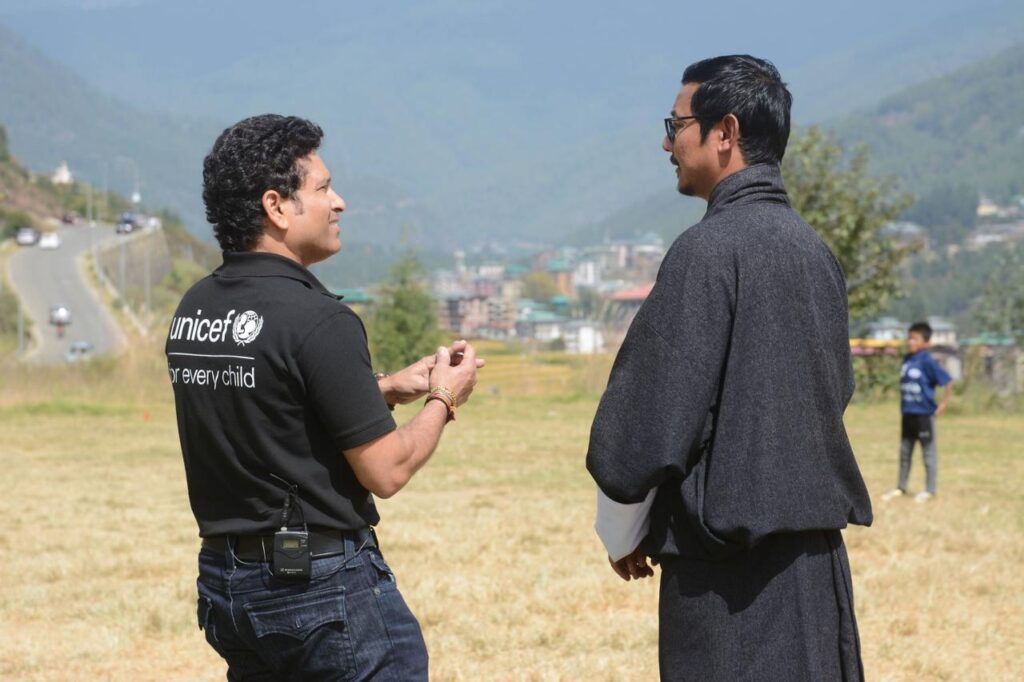
What role does coaching, technology, and fitness play in the development of players under the Federation’s program?
Cricket, like any sport, is a science, and coaching, technology, and fitness are essential to player development. With the rise of T20 cricket, the intensity and workload have increased, making injury prevention and fitness even more crucial. At the Federation, we constantly upgrade coaching methods to ensure players are prepared from the beginning to compete at the highest level. Our coaches are trained with the latest techniques and tools to help players evolve.
Technology plays a key role in this process. Starting this year, we are using video analysis, fitness tracking, and sports science to monitor performance, provide personalized feedback, and tailor training. This approach helps us optimize techniques, track fitness, and enhance mental readiness.
Fitness remains a cornerstone of our development programs. We are focusing on strength, conditioning, and injury prevention to ensure players are physically prepared for the demands of modern cricket. Our goal is to maintain peak performance, reduce injuries, and prolong careers.
What have been the biggest challenges you've faced in growing the sport in the country?
When it comes to challenges, financial constraints are often mentioned, and I believe this is something every cricket board has faced at the start. Bhutan Cricket is no different. However, beyond just player and infrastructure development, we have a solid plan in place for financial growth. Cricket has become one of the top sports globally, ranking second in popularity. With the game’s evolution and growing demand, there is huge potential to generate revenue.
I still remember when we started with little to no funding—just the passion of people wanting to play and organize some competitions. Today, we’ve come a long way and are steadily growing. There are several strategies in place to ensure long-term financial sustainability, and one of the most exciting plans is the introduction of a franchise tournament within the next five years. This initiative has the potential to be a game-changer for Bhutan Cricket, opening new revenue streams and increasing the sport’s visibility.
Cricket is a highly competitive sport globally. How do you ensure that the national team stays competitive against stronger cricketing nations?
The time will come when Bhutan will compete in a World Cup. Having worked closely with Bhutanese cricketers, I’ve seen their incredible potential. As their former coach, I’ve watched our team win international tournaments, reach finals, and secure victories against top cricketing nations—achievements made despite limited facilities and experience. This speaks volumes about the untapped talent within Bhutanese cricket.
To take the next step, it’s crucial to invest more in domestic cricket to raise its standard. Every top cricketing nation has a strong domestic system, and we need to build one to lay a solid foundation for success. Investment in facilities and coaching is also vital for ensuring our players remain competitive on the global stage.
While Bhutan may take some time to compete in Test cricket, the T20 World Cup is a realistic goal we can focus on in the short term. The 50-over format is also a key area for development, and we must continue to improve in both formats to eventually challenge at the highest level.
Infrastructure is a key element in developing a competitive cricket environment. What initiatives have been taken to improve facilities and grounds across the country?
Due to Bhutan’s mountainous terrain, finding flat land for cricket grounds is a significant challenge. However, we are grateful to the schools for allowing us to use their grounds for both school and club competitions. In collaboration with them, we have installed nets and artificial turf center pitches in various districts.
Currently, the Gelephu International Cricket Ground serves as the hub for national team training and hosts international tournaments. In the 13th Five-Year Plan, a cricket stadium, known as the Rama Center of Excellence, has been approved. This facility, a Bhutan-India Friendship Project, will provide a world-class venue for both cricket and shooting. Upon completion, we will have two international-standard cricket grounds, offering even better facilities for our players.
We are also exploring the possibility of developing more cricket grounds across the country. This will depend on the availability of funds, but as our financial situation improves, we will continue upgrading facilities in a phased manner across districts.
How important is international exposure for the national team, and what strategies are being employed to increase Bhutan's participation in global tournaments?
International exposure is crucial for the national team, as it helps players develop technical skills, adapt to different conditions, and gain valuable experience against top-tier competition. To increase Bhutan’s participation in global tournaments, we are focusing on strengthening domestic competitions to ensure players are match-fit and ready for international challenges. Additionally, we actively seek opportunities for the national team to participate in exposure tours, friendly matches, and training camps abroad. Collaboration with the ICC and ACC is also vital, as it helps secure invitations to international tournaments.
Furthermore, we focus on nurturing young talent through grassroots initiatives and a high-performance pathway, ensuring future generations are prepared for global competition. By implementing these strategies, we aim to increase Bhutan’s presence in international cricket, enhance player development, and ultimately achieve success on the world stage.
What efforts are being made to build strong relationships with other cricket boards and gain international recognition?
Bhutan Cricket has built strong relationships with other cricket boards, and our ranking of 14th globally in the ICC Development Ranking has provided us with the platform to share our success stories and strategies with other nations. We are frequently invited to present these insights at ICC Conferences, further strengthening our international network. Additionally, being located near some of the world’s top cricketing nations offers us the opportunity to play higher-level cricket, which is essential for our growth. These relationships not only provide valuable support at various levels of the game but also enhance our competitive edge. Furthermore, Bhutan has now begun hosting international tournaments, inviting countries from different parts of the world, which further boosts our visibility and fosters global cricket connections.
Women’s cricket has been gaining momentum globally. What is the Federation’s strategy to promote and develop women’s cricket in the country?
Women’s cricket in Bhutan began competing internationally in 2008, and in the past 16 years, the game has grown tremendously. Bhutan is now one of the top countries where more women are playing cricket. The growth of women’s cricket is also a key strategic priority for the ICC, which has seen significant development globally. The ICC Women’s Cricket Strategy focuses on increasing participation, enhancing competitions, and improving infrastructure, with an emphasis on creating more opportunities for women at all levels through better access to facilities, coaching, and resources. The strategy also aims to raise the profile of women’s cricket through greater media coverage, broadcasting, and sponsorships, while addressing gender equity in pay and working conditions.
In Bhutan, we are closely aligned with the ICC’s strategy. We run programs for women’s cricket that mirror those we have for men’s cricket, ensuring equal opportunities for growth. However, we also recognize that women have a greater chance of reaching the top levels of international cricket, particularly in T20 formats. One of our key goals is to focus on getting our women’s team into the T20 World Cup, as we believe it is a tangible and achievable target that will elevate the game and provide our players with the exposure they deserve.
Bhutan Cricket has introduced a Player Grading Contract System. Could you provide some insights into how this system works and how it will impact the overall performance of the team?
The Player Grading Contract System (PGCS) has been part of our long-term plan, but due to budget constraints, we were unable to implement it until now. However, we are finally in a position to roll it out. The PGCS, developed by the Bhutan Cricket Council Board (BCCB), is designed to categorize and grade players based on their performance, fitness, skills, and overall contributions to the sport.
The primary aim of this system is to provide financial incentives and rewards, motivating players to consistently perform at their best. It also encourages players to continuously improve their skills, fostering healthy competition within the team. Additionally, it enables the BCCB to manage player resources more efficiently.
The system aligns with our short-term goals, particularly with a focus on excelling in regional tournaments. The continuation of these contracts will depend on our success in these competitions. Our top priority remains to excel in tournaments organized by the International Cricket Council (ICC) and the Asian Cricket Council (ACC).
Under this system, 38 players (19 male and 19 female) will be selected based on their performance evaluations. The criteria for selection or renewal of contracts include recent performance, fitness levels, availability, and overall contribution to the national team.
Looking ahead, what is your long-term vision for cricket in the country? Where do you see the national team in the next 10 years, and what specific milestones would you like the Federation to achieve?
Looking ahead, my long-term vision for cricket in Bhutan is to establish the sport as a mainstream, competitive force on the international stage. In the next 10 years, I envision the national team regularly competing in regional tournaments, with the ultimate goal of qualifying for major global events like the ICC T20 World Cup and, eventually, the ICC 50-over World Cup. Key milestones include the development of strong domestic infrastructure, with at least four international-standard cricket grounds, including a high-performance center, providing players with the resources they need to reach their potential. Additionally, we aim to create a sustainable player development pipeline, from grassroots to elite levels, ensuring that promising talent is nurtured and progresses into the national team.
We also plan to establish a world-class coaching system that evolves with modern cricket trends, producing skilled coaches who can drive the development of the sport not only in Bhutan but also in neighboring countries. Expanding international exposure through partnerships and hosting more international tournaments will provide valuable experience to our players. Women’s cricket will also remain a top priority, with the goal of seeing Bhutanese women competing in global tournaments, including the T20 World Cup. Achieving these milestones will lay the foundation for Bhutan’s cricketing future, ensuring both sustainability and growth of the sport in the country.
If you had to sum up the impact of your leadership on cricket in the country, what would you consider your greatest achievements? What legacy would you like to leave for future generations of cricketers and fans in the country?
If I had to sum up the impact of my leadership on cricket in Bhutan, I would consider the greatest achievements to be the establishment of a sustainable and growing cricket ecosystem, the development of key infrastructure, and the successful introduction of various programs that have made cricket accessible to a larger population, particularly at the grassroots level.
During my time, we’ve seen significant strides in the level of cricket being played, both for men and women, may be because of budget constrain and popularity and our national teams have made their mark in international tournaments despite the challenges we face as a smaller cricketing nation.
One of my proudest achievements has been the creation of a structured player development pathway, from grassroots programs to the national team, which has not only identified raw talent but nurtured it into highly competitive players. Additionally, the establishment of coaching programs, player grading systems, and the development of international-standard cricket facilities have laid the foundation for sustained growth.
As for my legacy, I would like to be remembered for having built a strong, self-sustaining cricketing culture that continues to thrive well into the future. I hope that future generations of cricketers will benefit from the systems and infrastructure we’ve put in place, and that they will build on these foundations to take Bhutan’s cricket to greater heights.
Ultimately, my vision is to leave behind a legacy of growth, achievement, and opportunity for all future players and fans, ensuring that cricket remains a vital part of Bhutan’s sporting culture for years to come.
Is there any message you’d like to share with the cricket community or young aspiring cricketers in the country?
I’d like to say: Never stop believing in your potential, no matter how challenging the journey may seem. Cricket, like any sport, demands hard work, dedication, and resilience. But it also offers incredible rewards—not just in terms of success on the field, but in personal growth and the invaluable lessons it teaches about teamwork, discipline, and perseverance.
For the young players, remember that every step you take, no matter how small, brings you closer to your goals. Focus on honing your skills, stay disciplined, and keep pushing yourself. Take full advantage of the resources and opportunities that are now available to you—whether it’s the training facilities, the support of coaches, or the chance to compete in domestic tournaments.
Most importantly, believe in your dreams. Bhutan is on a growing path in cricket, and you are a part of that future. Work hard, stay focused, and you can make a significant impact not just in Bhutan, but on the global cricketing stage. The sky is the limit if you are willing to put in the effort, and I have no doubt that the next generation of cricketers will continue to raise the bar and take Bhutan’s cricket to even greater heights. Stay passionate and keep striving for excellence!
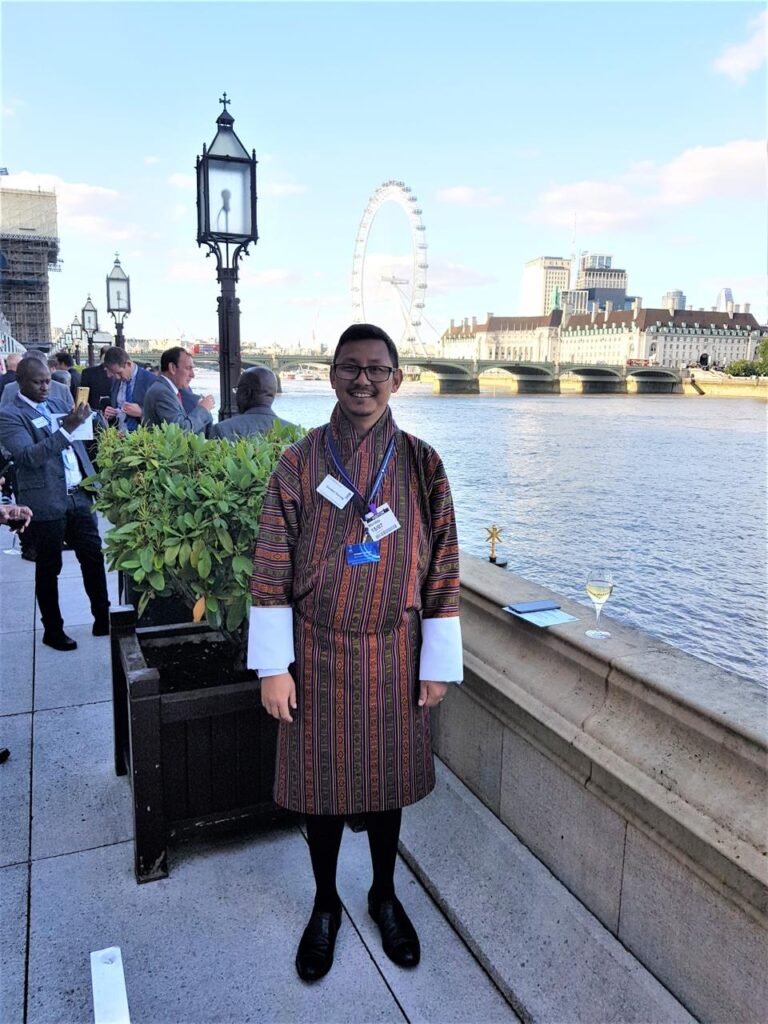
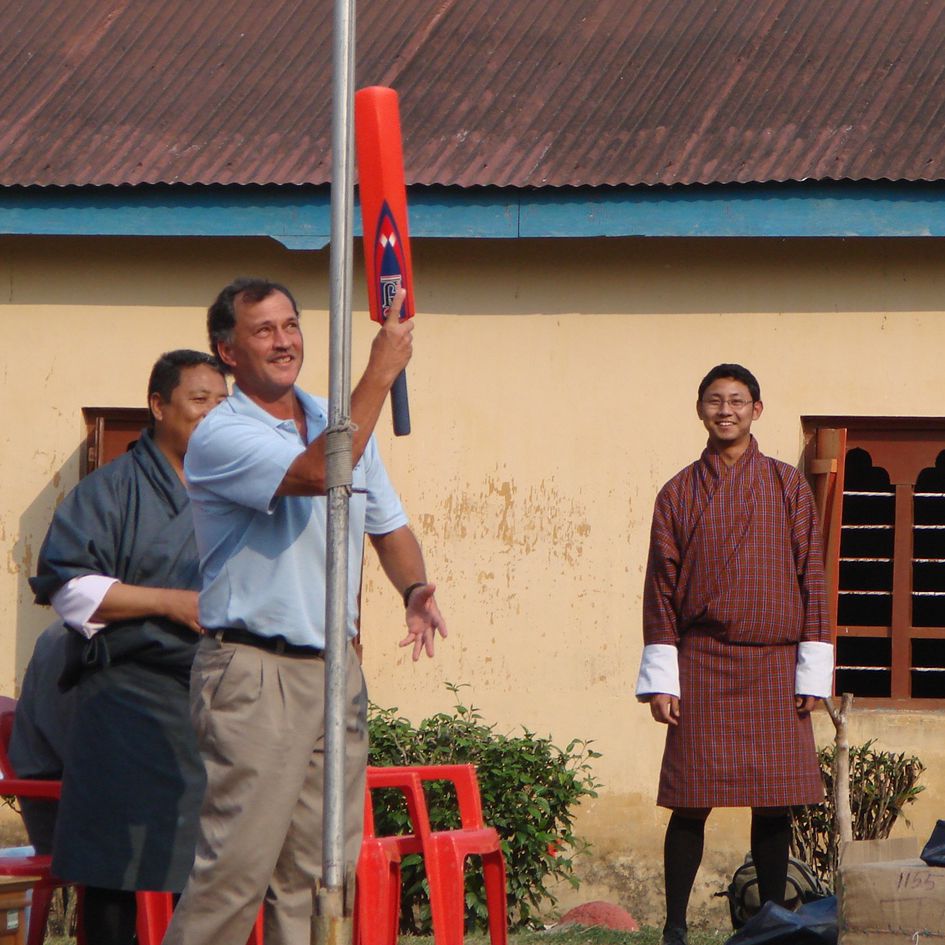
Bhutan Cricket has truly made remarkable strides over the years. Today, more than 17,000 Bhutanese are actively competing in cricket, with over 35,000 individuals involved in the sport through various programs and activities. The Federation has successfully organized over 230 competitions throughout the year, fostering a vibrant and competitive cricketing culture across the country.
From grassroots to elite levels, Bhutan now boasts national teams at both the U16 and senior levels, all of which actively participate in international competitions. The growth of Bhutan Cricket is a testament to the dedication and vision of individuals, who continue to drive the sport to new heights.
With a bright future ahead, the country’s cricketing community is more united and focused than ever, aiming for greater success on the global stage.


